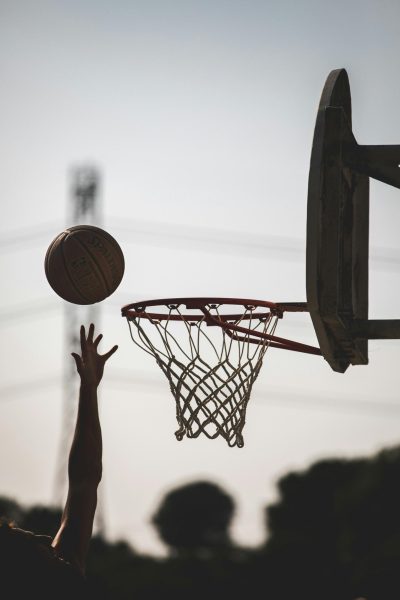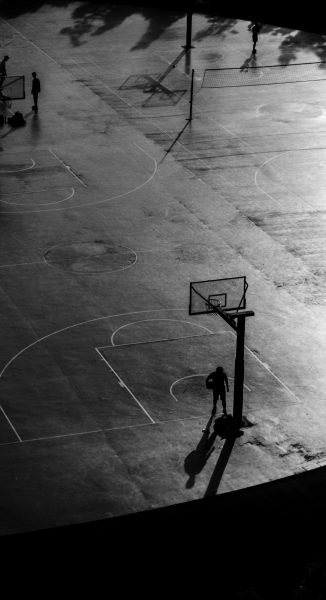Who and What Opened the Door for Nathan Chen’s Gold Medal?
A peek into the last decade of skating for those who watched the Olympics
NOELLE AVENA
Yuzuru Hanyu vs Nathan Chen- the Japanese v. American men’s single skate rivalry. While American media focused on Chen, the rest of the world was thinking about Hanyu. In fact, there was no rivalry, at least not on Hanyu’s end. His only competition, for the past nine years, has been himself. Hanyu is so immensely popular that his presence in Beijing caused political tension from the outpouring of Chinese support for a Japanese skater. Photos from right after the Olympics went viral of the almost empty press conference for the three medalists compared to Hanyu mobbed by journalists at the airport, despite his fourth place finish. Now, at 27, the Tom Brady of figure skating is succumbing to years of injury, and America’s Nathan Chen is stepping in to fill that role.
Hanyu was the youngest man in almost 100 years to win a gold medal, at age 19 in Sochi, defending his gold in 2018, also not done for almost 100 years. He upped the world record high score 19 times and was the first to hit the 100 point mark in the short skate and the 300 point total. He was also the first to land a quad loop in competition.
In the middle of the 2010s, the quad revolution pushed many senior skaters out of the game. Hanyu, against the odds, conquered quads and brought his already intimidating technical score to heights thought impossible- the magical 300 mark.
This quad revolution refers to a spark set in 2015 from a rookie, China’s Boyang Jin, who debuted in the senior division with six quad jumps scheduled in his program. A quadruple jump is the highest-scoring element in figure skating, needing four full rotations in the air, and a fraction of skaters could perform them. This terrified every competitor. Hanyu’s training mate, Javier Fernandez from Spain, helped him add a second quad to his roster, mastering the quad Salchow. Both Fernandez and Hanyu came out victorious that Grand Prix season, but not without completely changing the field- it became necessary for a male skater to have multiple quads and repeat them throughout their program to even come close to the massive technical score Hanyu was racking up.
The ISU scoring methods changed to accommodate these new programs. This opened a previously ‘artistry’-dominated field to allow a skater like Chen, who had the athleticism the quad revolution demanded, to go from his under-the-radar rankings up to a prominent skater in a few years. Nathan Chan would not be able to compete at a high level, as he falls short in transition and component talent, if it wasn’t for the quad revolution.
In the 2021 season, even without Hanyu, whose ankles were injured, the field competed like he was still there- quad frenzies, dangerously exhausting programs, each skater trying to touch perfection. His name never left the lips of international reporters and skating fans, all anxiously anticipating Hanyu’s return.
Competition is not the only way the skating world evolved in the last decade. Coach Brian Orser struck gold in 2012 when Hanyu asked to train under him and with Orser’s protégé, the aforementioned Fernandez, in Toronto, which sparked a migration of skaters to their club. The Toronto Cricket Club became the world skating mecca, and the biggest names like Jason Brown (US), Yuna Kim (Korea), Evgenia Medvedeva (Russia), Hanyu (Japan), Fernandez (Spain), and Cha Jun-Hwan (Korea) trained together under Orser. Many more came and went throughout the years. The best skaters representing a diverse range of countries taught and inspired each other in this supremely popular club, and through each competitive season, Orser’s students topped the podium, led by Hanyu. This is what made the 2018 Olympics so satisfying for skating fans- the top three were two of Orser’s skaters, Hanyu and Fernandez, and their junior and close friend, Shoma Uno. The Olympics aren’t of extreme importance for a skater’s career, but they are fun, and it’s where most of the world crosses paths with competitive skating.
Nathan Chen was met with lukewarm support from the skating world because he is a bit of an outsider. He doesn’t have many international friends and he doesn’t train in international camps, either. The Cricket Club decline that allowed for his gold in this Olympics started right when Hanyu’s career was peaking- Hanyu’s second Olympic gold in 2018. Right after the free skate, Fernandez privately announced his retirement to Hanyu and Uno in a long goodbye hug. One of the most competitive skaters was leaving, leaving room for a new champion, but the support he provided the Cricket Club was leaving as well. The Cricket Club never regained its status. Hanyu, for the past two years, has been stuck in Japan in its closed borders. He had to prepare for the past two seasons and this Olympics without a coach, unable to return to Toronto. The Cricket Club lost its beloved senior, Fernandez, and its keystone, Hanyu.
Chen and Hanyu are on a similar technical level, with some key differences. Chen, nicknamed the quad king, has extreme strength and accuracy with his jumps. He can do every quad jump currently in competition, except for the quad axel, of course, which was just added into competition by Hanyu. Hanyu, nicknamed the ice prince, can complete elements that are usually only possible for female skaters due to the level of flexibility required. They’re also of different skating generations. Hanyu, 27, comes from a time when skaters were trained as ballet dancers and performers. Chen, 23, post-quad revolution, focuses mainly on athleticism.
The better of the two was contested for many years, as Hanyu is inconsistent with several of his jumps, but Nathan struggles in the component score (half of each program score is dedicated to artistry and choreography expression). They also have a clear difference in their literal style- Chen opts for the most masculine skating costumes possible, while Hanyu usually performs in variations of blue chiffon or white feathers with plenty of rhinestones. As a side note, it’s irksome to viewers when skaters don’t wear rhinestones, as it makes it difficult to see more than a matte blur of fabric when they turn, but Chen has a dedication to a show of masculinity on the ice.
American reporters called Chen the favorite for gold, but the rest of the world media gave Hanyu that bet. Chen has been undefeated since 2018, but the Olympics were still thought of as Hanyu’s turf. No matter how perfectly and beautifully Chen skated, there would be a mass of opposition. Hanyu’s own quad revolution, which propelled him to greatest-of-all-time status years ago, would bring his downfall. The more quads a skater does, the faster they have to retire, and injuries constantly slowed Hanyu down. Now, Hanyu would have to beat all odds to be highly competitive ever again.
Every sports dynasty comes to an end, but that doesn’t mean it’s easy to let go. One golden age of figure skating is over- one that saw bigger jumps and masterful artistry and more fans than ever before- but a new one is on the rise. Chen and the next generation, including Hanyu’s juniors Yuma Kagiyama and Shoma Uno, will conquer Hanyu’s records one by one, and while it’s a goodbye, breaking those records will be their way to continue that legacy of pushing the sport farther.
Your donation will support the student journalists of East Lyme High School. Your contribution will allow us to purchase equipment and cover our annual website hosting costs.




